A Wining Cost Estimate
That Helps You To Win More Framing Construction Projects
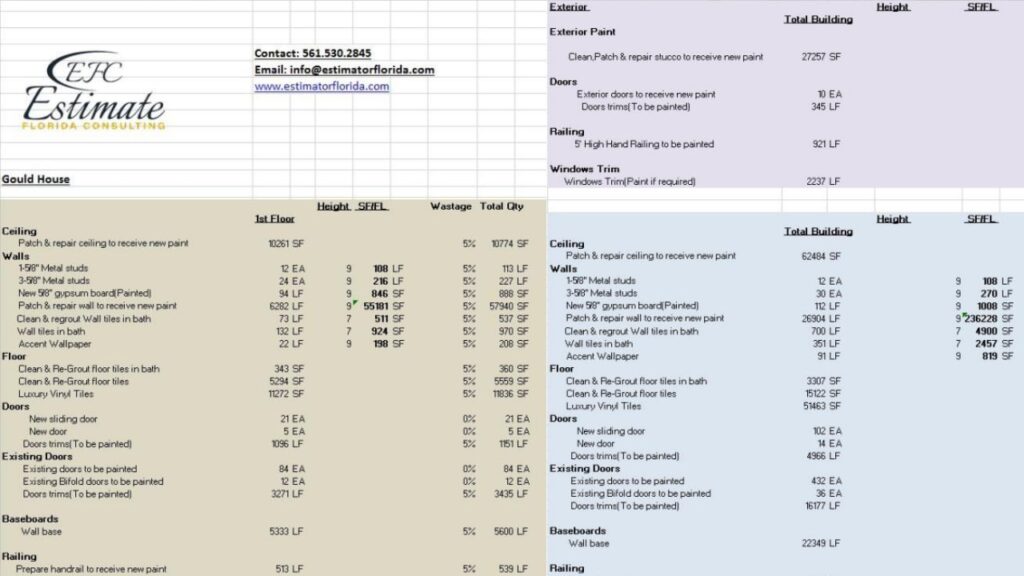
Estimating the cost of commercial framing is no easy feat! To get it right, you must consider factors such as project size and complexity, materials used, and any additional services required. Have a complete guide to help you plan and budget effectively, without any unwelcome surprises? We’ve got you covered.
First, understanding the project scope is key. Assess wall types, ceilings, roofs or floors that must be framed. Calculate quantities and sizes. Analyze site conditions, accessibility needs, and timelines to inform labor costs.
Unique details must also be accounted for. Local regulations and industry standards can play a huge role. For example, seismic loads and fire-resistant requirements will determine fasteners and materials used. Get ready to crunch the numbers!
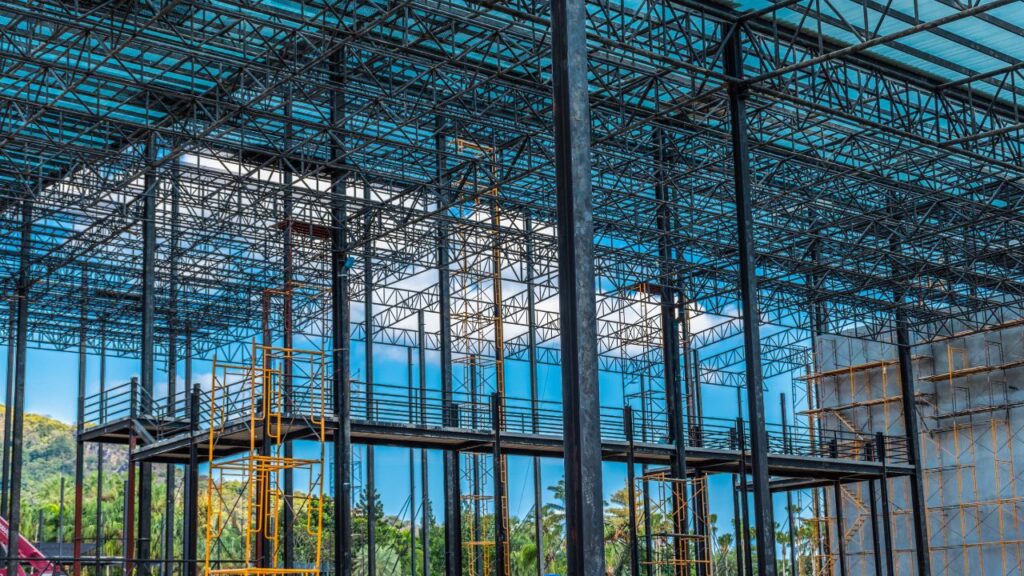
Preparing for Accurately Estimating Commercial Framing Expenses
To precisely determine the cost of commercial framing, preparing for accurate cost estimation is crucial. Gathering exact measurements and detailed information about the project requirements, such as building codes and construction regulations, can help ensure a precise and reliable cost estimate.
It is vital to keep in mind that commercial framing cost estimation is different from residential framing cost estimation. The calculations for commercial framing involve more significant materials and project complexity due to commercial structures’ requirements.

Furthermore, it is crucial to consider the type of framing materials used. Steel, wood, and metal are usual materials used in commercial framing, with steel being the most popular choice. However, to avoid greenhouse gas emissions and depletion of natural resources, going for alternate materials such as recycled steel and various engineered wood products can be a smart and cost-effective decision.
Interestingly, depending on the project, some framing techniques can be more expensive than others. For example, light-gauge steel framing is typically cheaper than wood framing, whereas cold-formed steel framing is about the same price as wood.
Understanding the unique details of commercial framing cost estimation can be complicated. Still, it is essential to be well-informed to prevent excessive costs and budget deficits related to the project.
Get your wallets ready, we’re going on a shopping spree for framing materials!
To estimate framing costs, you need a comprehensive list of materials. Knowing the materials in advance helps provide clarity and avoids unexpected expenses. It’s essential to include all necessary pieces when budgeting – omissions can lead to underfunding or overfunding issues.
When selecting materials for framing, look for cost-effective choices without compromising quality. Using locally sourced raw materials can save on transportation costs and secure timely deliveries.
In particular, here’s a List of Materials Required for Frame Construction:
For accurate cost estimation, it’s vital to grasp the project’s scope and the expenses involved. Comprehending the project requirements, materials, and labor is a must when making precise estimates that include each financial aspect of the project.
Breaking down the project into its parts and their costs is essential. Also, remember to plan for any contingencies that might come up.
Timelines are another factor to consider, as delays will result in more costs. Scheduling personnel, materials, and equipment correctly helps include time-related expenses in the estimation.
To be ready for cost estimation, use professional tools or consult with industry experts. This will provide insight into what factors drive each project’s cost, and what hidden expenses to look out for.
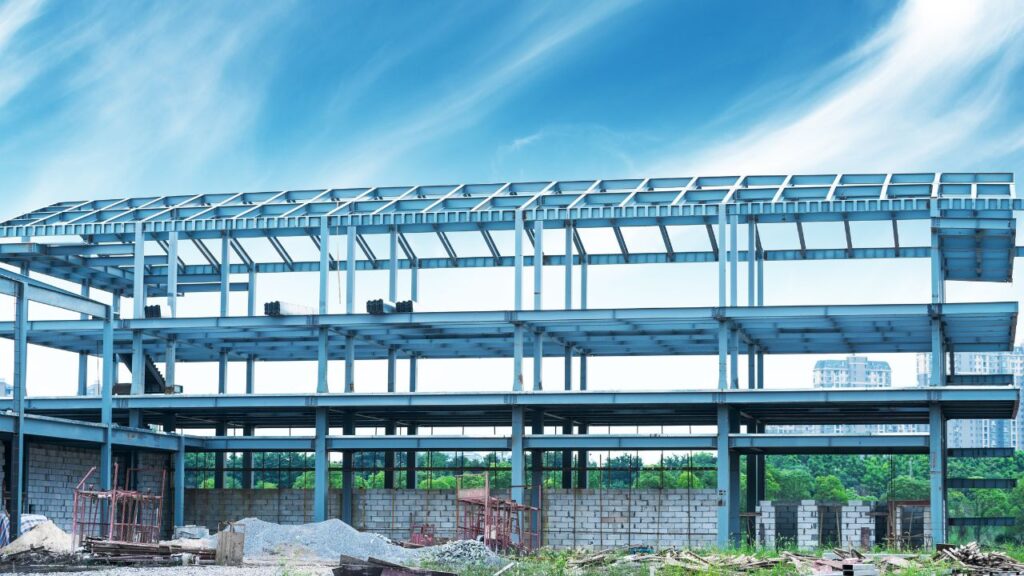
Having a clear view of the project’s scope and potential costs allows you to make better estimates with fewer mistakes. This gives you more control over budgets and timelines, and reduces the risk of costly errors.
Estimating costs? It’s key to know market rates. Research current prices and you’ll be able to get a better cost estimate. Here’s a look at some common services and their rates:
Service | Price |
|---|---|
Graphic Design | $50-$150/hr |
Copywriting | $0.10-$1/word |
Website Dev | $75-$200/hr |
Be aware, prices can vary. Location and experience level can affect them.
To accurately estimate costs, look at a variety of sources. These include industry reports, competitor pricing, and online databases.
Take this example: a small business owner wanted to add to their product line. By researching market rates and competitor pricing, they were able to estimate the cost and choose profitable prices.
We help contractors find new customers with high-converting websites and locally targeted niche-specific lead-generation programs. You’ll never need to worry about running out of work again! We focus on quality over quantity with our leads for contractors.
To determine the expense of wood and other materials, you need to consider the type of wood, quality, and amount. Below is a table that can help in assessing the cost of lumber and other materials.
Type of Wood | Quality | Amount | Cost |
|---|---|---|---|
Pine | Standard | 2×4 | $2.50/ea |
Cedar | Premium | 2×6 | $4.50/ea |
Spruce | Select | 4×4 | $6.00/ea |
Additionally, other materials such as nails, screws, and braces can add to the cost of a framing project. These will vary depending on the project’s unique needs.
A source from the National Wood Flooring Association suggests that the cost of lumber has risen by double digits on average over the past year due to the impact of the COVID-19 pandemic on the lumber industry.
Looks like understanding lumber size and pricing is going to be a tree-mendous headache, but we’ll branch out and get through it together.
Dimensions and Costs of Lumber – What You Need to Know.
Size affects the price of lumber in construction projects. A thicker piece of lumber, such as a 4×6 beam, will cost more than a 2×4 of the same length. See the Table below for an example:
Dimension (inches) | Price per foot($) |
|---|---|
1×3 | $0.34 |
1×4 | $0.45 |
1×6 | $0.68 |
2×4 | $0.94 |
2×6 | $1.17 |
Bigger dimensions = higher cost.
It’s also important to look at quality and species when shopping for lumber. This will help avoid extra costs due to wastage or replacing materials.
According to a report by Fortune Business Insights in 2021, lumber prices have gone up worldwide due to high demand and supply chain issues.
So, if you’re having trouble with lumber, remember: measure twice, cut once, and hope for the best!
Maximize your framing construction business’s potential with our competitive financing options

Estimations for Lumber and Other Materials.
Lumber is important in many construction projects. So, estimating its amount is as vital. To make accurate estimations for lumber and other materials, there are factors to consider. These may include: building design, location, measurements, cost per board foot or linear foot, and unforeseen wastes.
See the table below for estimating the amount of lumber for a project based on the desired dimensions:
Material | Dimension | Quantity Required |
|---|---|---|
Softwood Lumber | 2x4x8 | 50 |
Hardwood Lumber | 1x8x6 | 20 |
Structural Plywood | 4 x 8 | 12 |
Oriented Strand Board (OSB) | 4 x 8 | 10 |
Window/door quantities, siding requirements, and finishings can also affect total material requirements.
Keep in mind that these calculations give estimated costs. Actual costs will differ based on prices at local retailers or suppliers. Building codes in your area might demand additional materials not present in this estimate and provide minimum requirements or specifications for certain materials.
Fact: In recent years, the cost of lumber has increased due to supply chain problems caused by COVID-19 restrictions. (Source: Forbes.com)
Checking the prices of other framing materials may give you vertigo!
Calculating the cost of materials for framing a project is essential. Expenses can add up quickly when additional materials are involved. To make it easier, create a table with columns for Material, Quantity Needed, Price per Unit, and Total Cost. This should include all necessary materials like sheathing, insulation board, flashing tape, foam padding, fiberglass batting, and more.
Remember to research the specific requirements for each type of material before starting. Don’t forget to factor in taxes and delivery fees too, as these can add to the total cost. Finally, estimating labor costs can be difficult. So, don’t be surprised if you feel like chopping down a tree with your bare hands!
Discover the transformative power of hiring professional contractors for your project. Unlock a wealth of expertise and experience to ensure success. Get started today and see the difference!
Estimating the expenses for labor costs is a crucial component of any commercial framing project. Proper estimation can help save time and resources. Here’s how you can calculate labor costs accurately for commercial framing.
To estimate the labor cost for commercial framing, you need to factor in variables like hours worked and hourly wages. The table below presents a comprehensive breakdown of the labor expenses for commercial framing. It features columns detailing the number of hours worked and the corresponding wage per hour.
Job | Hourly Wage |
|---|---|
Project Manager | $75 – $125 |
Foreman | $35 – $65 |
Structural Framing Carpenter | $25 – $45 |
General Carpenter | $20 – $35 |
Skilled Laborer | $15 – $25 |
Apart from hourly wages and the time worked, other factors can affect labor expenses. These variables include worker benefits, taxes, and fringe benefits. These elements are essential to consider when calculating labor expenses.
Estimating labor costs can be tricky, but here are some suggestions for making the process more accurate. First, take into
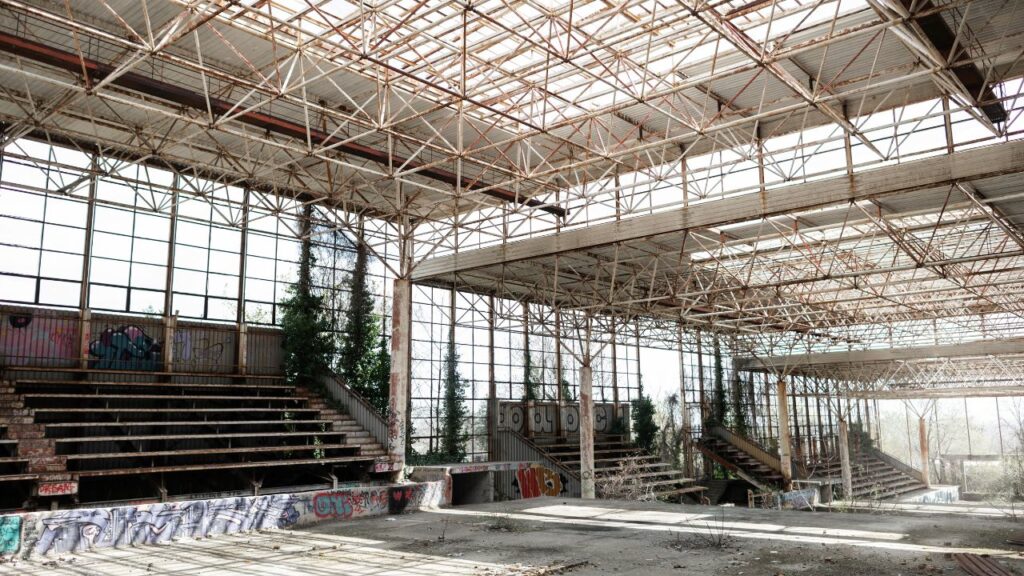
account the regional differences in wages. Second, ensure that you have a clear understanding of the project’s scope and complexity. Finally, don’t forget to include fringe benefits like health insurance or retirement benefits. By implementing these measures, you can ensure that your labor cost estimation is as accurate as possible.
Warning: Attempting commercial framing cost estimation without the required skills and experience may result in a severe headache and a lighter wallet.
To accurately estimate labor costs, it’s important to understand the necessary skills and experience for the job. Analyzing needed certifications is also vital.
Previous experiences can provide insight into the required level of expertise. It’s not enough to just know particular skills, though – it’s essential to see how they apply to the task.
The Sydney Opera House in Australia is a famous example of cost estimation gone wrong. It was estimated at AUD 7 million but ended up costing AUD 102 million. This highlights how important it is to accurately estimate costs from start to finish.
Searching for the ideal labor rate is like looking for a unicorn – elusive, magical, and probably non-existent.

Labor Costs Depend on Project Length and Complication.
Estimating labor costs is important for budgeting in business projects. Project length and difficulty decide the amount of time and resources needed from employees. Companies can make proper estimates of labor prices to avoid financial losses.
To help with this concept, we have a table showing the different factors that impact labor expenses. The table includes columns for project type, length, complexity, number of workers, average hourly wage, and total labor cost. This data can help calculate and budget labor expenses.
Project Type | Length | Complexity | Number of Workers | Average Hourly Wage | Total Labor Cost |
|---|---|---|---|---|---|
– | – | – | – | – | – |
Unique details about calculating labor prices include outsourcing. Utilizing third-party services could be more cost-effective for certain projects with less complex requirements or shorter time frames. It’s worth considering as it saves money in the end.
Considering employee experience also affects costs. Experienced workers may charge higher wages but finish tasks faster than entry-level staff who get paid less but need more supervision.
Good communication within the team also helps reduce extra expenses. Providing clear instructions on project goals, timelines, tasks, etc., increases efficiency and helps control labor costs.
Don’t forget the cost of your sanity – estimating labor costs can drive even the most zen-like person mad!
In addition to the framing cost, there are additional expenses to consider when estimating the total cost of a commercial framing project. These external costs can impact the overall budget and should not be overlooked.
One factor to consider is the cost of building permits. Depending on the location and scope of the project, permits may need to be acquired from the local municipality. This cost should be factored into the budget.
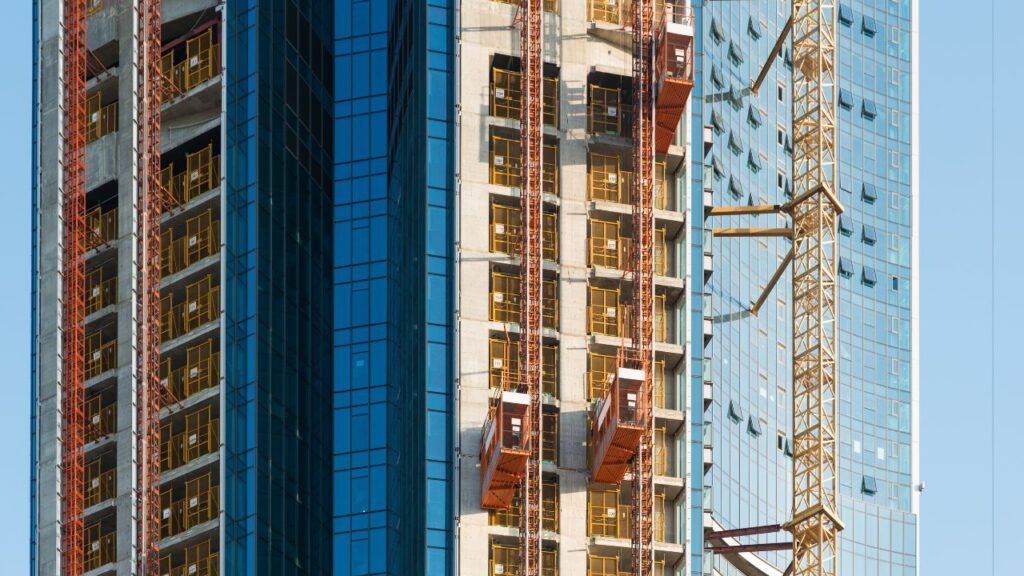
Another cost to consider is the expense of loading and unloading materials. If the framing materials need to be transported to the job site and unloaded, this cost should be included in the budget.
Finally, it is important to consider the cost of cleanup and removal of waste materials. This may include the rental of a dumpster or the cost of hiring a waste removal company.
To keep these additional costs in check, it is essential to plan ahead and budget accordingly. One suggestion is to work closely with a reputable framing contractor who can provide guidance on the costs associated with a particular project. Additionally, utilizing green materials can help to minimize waste and lower cleanup costs.
Hold on to your tool belts, folks, because this section is going to hammer home the real cost of commercial framing equipment.
For a successful project, you must account for all expenses. This includes the cost of tools and equipment. These resources can have a big impact on budget and timeline. So, it’s essential to have a plan.
See below for a breakdown of Equipment and Tool Costs:
Item | Cost | Purpose |
|---|---|---|
Power Drill | $100-$500 | Drilling holes and securing fasteners |
Saw | $80-$400 | Cutting materials like wood, metal or cardboard |
Ladder | $40-$300 | Accessing high places such as ceilings or roofs |
Gloves/ Safety Glasses/ Boots | $20-$150 each | Safety while handling equipment |

For a successful project, you must account for all expenses. This includes the cost of tools and equipment. These resources can have a big impact on budget and timeline. So, it’s essential to have a plan.
See below for a breakdown of Equipment and Tool Costs:
Other costs include:
For example, we once had to paint an apartment complex. We had to rent tools that weren’t included in the budget. This added an unexpected expense. So, consider all potential costs when working with tools and equipment. Transportation costs can also add up. But, at least you don’t have to worry about parking a horse and buggy!
For businesses, understanding the costs of logistical operations is essential for financial planning. These expenses include not just transportation, but also associated costs.
The table below shows ‘Shipping and Supply Costs‘ that companies should consider when estimating their expenditure:
Cost | Definition |
|---|---|
Freight charges | Price for moving goods from one place to another |
Insurance | Protects shipped items from loss/damage |
Import/export fees | Costs to legally move goods in/out |
Storage | Storing products over a longer period |
Besides these usual shipping and supply costs, other fees such as fuel surcharges, expedited shipping charges, and crating/packaging charges should be taken into account.
Accurate logistics cost estimates have a major effect on attracting clients and investments for businesses. So, review and calculate each cost carefully before offering services.
Don’t let extra transport & logistics costs cause worry. Consider all possible expenses in advance to handle them calmly. If you think contingency and miscellaneous costs are “we forgot about that”, then you’re not a project manager.
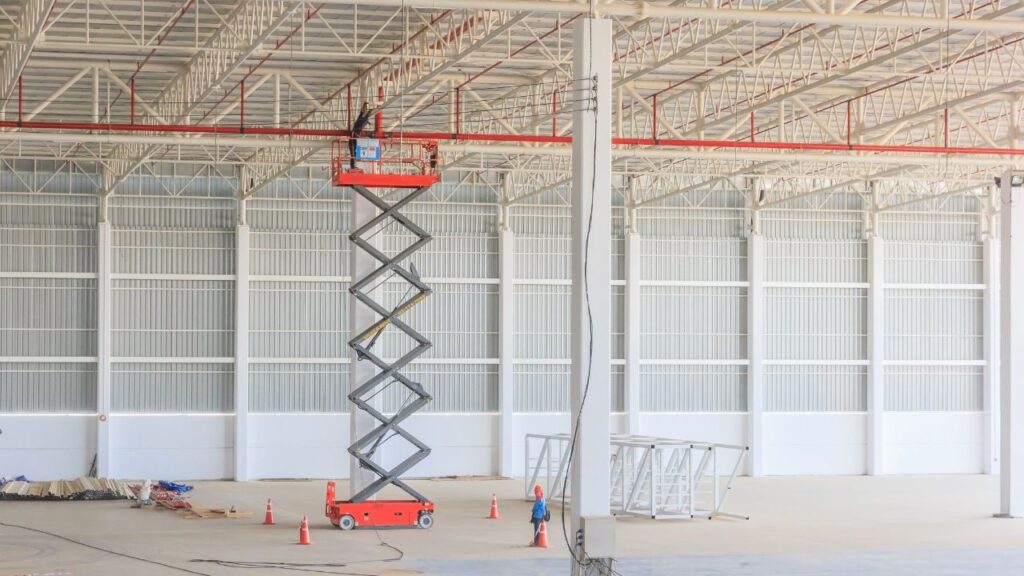
Contingency and miscellaneous expenses are unpredictable, yet necessary. They can have a big impact on the project budget.
Take a look at these potential costs:
Expenses | Cost |
|---|---|
Equipment breakdown | $2,500 |
Legal fees | $1,000 |
Permit fees | $750 |
Unexpected expenses can add up fast! Insurance costs should also be taken into consideration. Although it may seem like an extra cost, insurance can save you money in the long run.
In a previous project, legal fees led to costly overruns. Incorporating contingency and miscellaneous costs upfront can help avoid these surprises and keep the project on track.
By factoring in additional expenses at the start, you can ensure there are no monetary setbacks that might affect the project’s success.

Finalizing the commercial framing cost estimate involves the last crucial steps to determine the accurate cost required for your project.
A table can be created with the necessary columns for the “Estimation Finalization” process. The columns could include “Actual Cost,” “Total Cost,” “Profit Margin,” “Taxes,” “Overhead,” and “Final Project Cost.” By filling in accurate data in this table, you can get an idea of the total cost required for the framing project.
It is important to consider the unique details such as miscellaneous expenses, unforeseen circumstances, and additional costs that may have been missed earlier in the cost estimation process. These details can add up and affect the final cost, so they must be considered while finalizing the cost estimate.
Don’t miss out on finalizing the commercial framing cost estimate. Ensure the accuracy of the estimate by adding any missed expenses or details. This can help in avoiding last-minute surprises and unexpected costs during the project.
When it comes to commercial framing cost estimation, keep track of every penny or your wallet will be as empty as an abandoned construction site at night.
Bringing Together All Expenses
Cost estimation is vital to a project’s lifecycle. Accurate calculating of expenses will decide the project’s feasibility and financial success. Consolidating all costs is a necessary step to reach this goal.

To consolidate costs, here are some points to consider:
Once all expenses are consolidated, validate them against market trends or benchmarks to ensure competitiveness and accuracy. Accurate expense reports help avoid unexpected costs that cause overspending, delays, or legal issues.
Avoiding unexpected problems during implementation needs effective planning before work begins. Consolidating all costs is a major step towards successful budget planning.
Don’t miss out on valuable insights; take time to consolidate all possible expenses associated with the project. This gives clarity and traceability throughout implementation, ensuring a smooth execution process.
Adjusting the cost estimate will prevent us from being left in the lurch, even if market conditions are as unpredictable as a toddler on a sugar high.
Adjusting the final cost estimate based on market conditions and other factors is important. Factors such as availability of materials, labor, and economic trends may impact the overall cost. Unique details should also be considered, like permit fees or taxes.
Making accurate estimates is possible if you follow some tips. Obtain multiple quotes from suppliers to compare prices. Look into previous project budgets for insights. Use software tools to simplify calculations and reduce errors.
By considering all relevant factors and following these suggestions, you can create an accurate cost estimate for your project. Cost estimation isn’t rocket science, but it still requires attention to detail.

As we end our discussion on commercial framing costs, there are a few things to keep in mind.
Here is a table showing some key factors:
Factor | Description |
Project scope and complexity | Project complexity affects framing costs |
Framing materials | Type and quality of materials affects cost. |
Labor Costs | Worker availability, experience and skills affect costs. |
Codes and Regulations Compliance | Building codes must be followed. Fines for non-compliance. |
It is crucial to estimate framing costs correctly. Making wrong estimations can cause financial problems. Get an accurate picture before committing.
Be up-to-date with trends, technologies and techniques for commercial framing cost estimation. Don’t be left behind!
Commercial framing cost estimation is the process of determining the projected cost of materials and labor required to frame a new commercial building or renovate an existing space.
Several factors contribute to commercial framing cost estimation, including the size of the building, the type of framing materials used, the complexity of the design, and the local labor market rates for skilled framers.
The accuracy of commercial framing cost estimates largely depends on the quality of the information and data used to create the estimate, as well as the level of expertise and experience of the cost estimator.
To ensure the accuracy of your commercial framing cost estimate, you should work with an experienced and reputable contractor who has a track record of providing accurate and reliable cost estimates, provide the contractor with detailed plans and specifications, and be open and transparent about your budget and financial constraints.
Some common mistakes that people make when estimating commercial framing costs include underestimating the complexity of the design, failing to account for unexpected delays or complications, and not factoring in the cost of permits and other government fees.
To compare different commercial framing cost estimates, you should look at the total cost estimates provided by each contractor, as well as the breakdown of materials and labor costs. You should also ask each contractor to provide references and examples of similar projects that they have completed in the past.
Here I am going to share some steps to get your framing construction cost estimate report.
You can send us your plan on info@estimatorflorida.com
Before starting your project, we send you a quote for your service. That quote will have detailed information about your project. Here you will get information about the size, difficulty, complexity and bid date when determining pricing.
We do framing construction cost estimating and prepare a detailed report for your project. At last, you finalize the report and finish the project.
561-530-2845
info@estimatorflorida.com
Address
5245 Wiles Rd Apt 3-102 St. Pete Beach, FL 33073 United States
561-530-2845
info@estimatorflorida.com
Address
5245 Wiles Rd Apt 3-102 St. Pete Beach, FL 33073 United States
All copyright © Reserved | Designed By V Marketing Media | Disclaimer
IMPORTANT: Make sure the email and cell phone number you enter are correct. We will email and text you a link to get started.
By clicking “I Agree” above you give Estimate Florida Consultin express written consent to deliver or cause to be delivered calls and messages to you by email, telephone, pre-recorded message, autodialer, and text. Message and data rates may apply. You are able to opt-out at any time. You can text STOP to cancel future text messages.